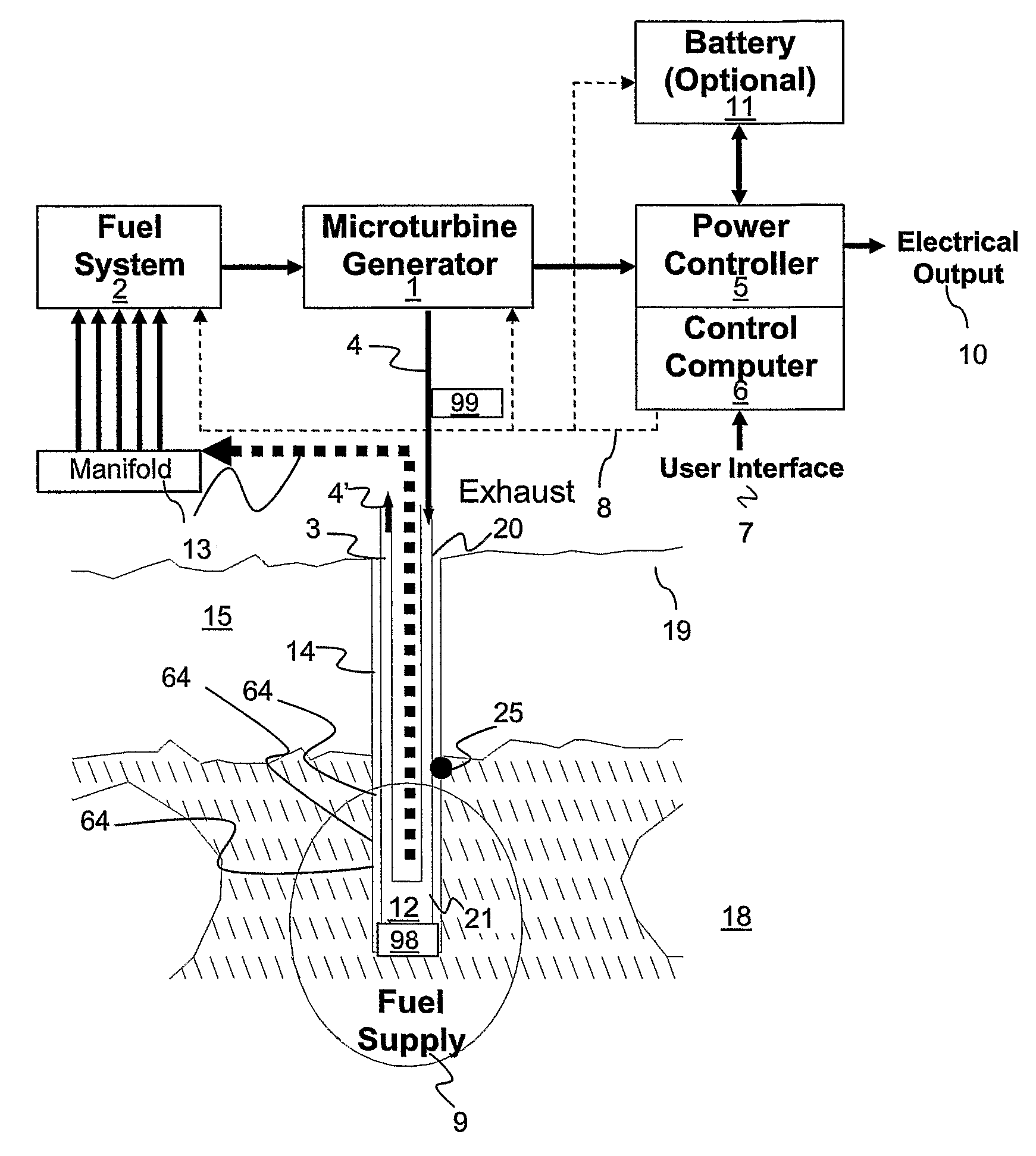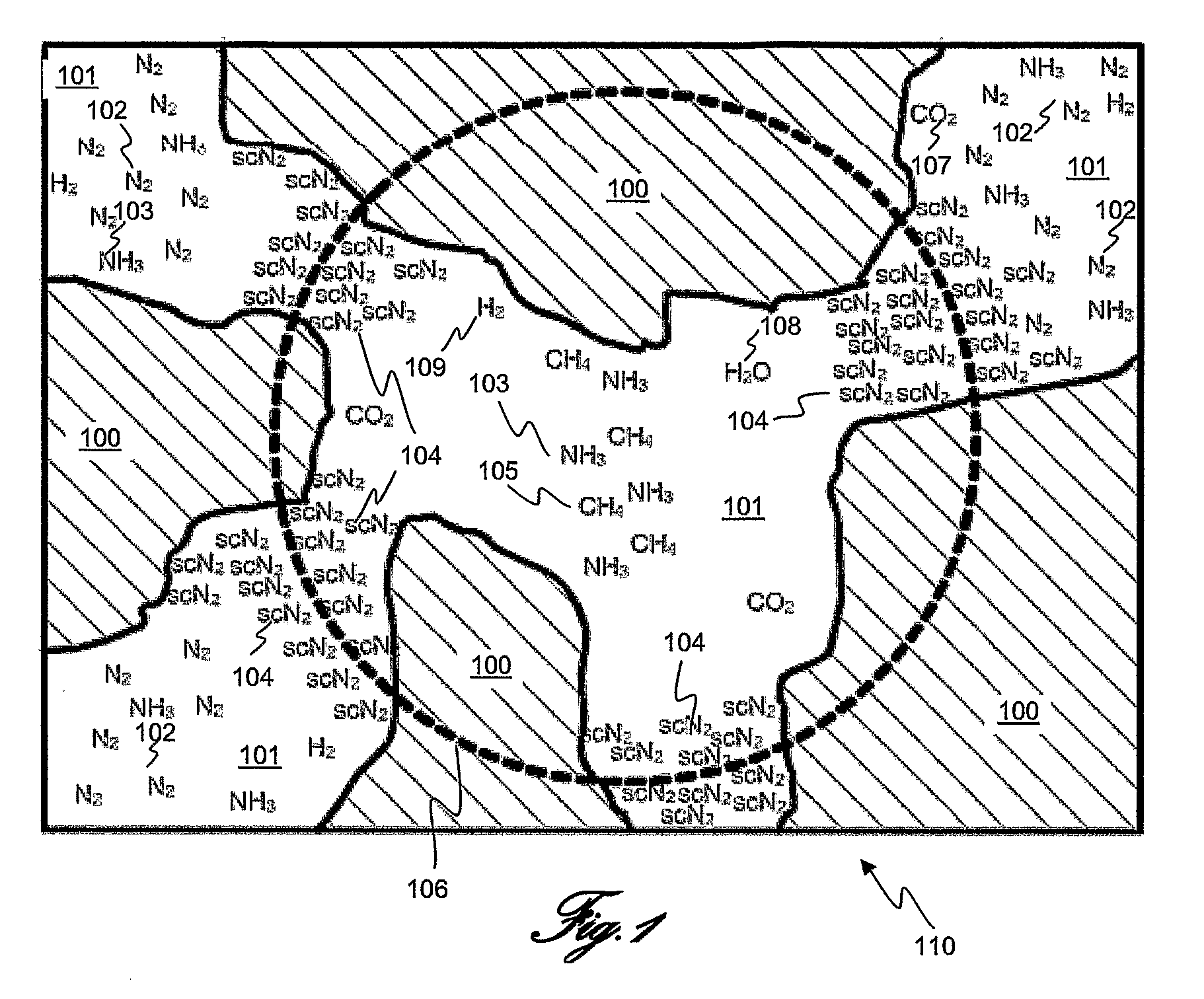Supercritical fluid recovery and refining of hydrocarbons from hydrocarbon-bearing formations applying fuel cell gas in situ
- Summary
- Abstract
- Description
- Claims
- Application Information
AI Technical Summary
Benefits of technology
Problems solved by technology
Method used
Image
Examples
Embodiment Construction
[0116]Referring now to the drawings, particularly FIG. 1, the present invention relates to an in-situ system for recovering hydrocarbons from hydrocarbon formations. In hydrocarbon-bearing formations in FIG. 1, there are two dominant structures: hydrocarbons 100 and the porous non-hydrocarbon formation 101 that structurally form the support of the hydrocarbon-bearing formation 110. Infusion of stable nitrogen diamers (N2) 102 combined with traces of hydrocarbon-reactive nitrogen compounds and anhydrous ammonia (NH3) 103 into hydrocarbon-bearing formations 110, which violently react (micro-bursts of energy) with hydrocarbons methane (CH4) 105, compress nitrogen into SCF cells 106 of supercritical nitrogen diamers (scN2) 104 with orders of magnitude more penetration into hydrocarbons than would naturally form from nitrogen diamers 102 migration alone. Hydrocarbons can be fully saturated with SCF, which migrate hydrocarbons out of formations, even at great distances from the regulated ...
PUM
 Login to View More
Login to View More Abstract
Description
Claims
Application Information
 Login to View More
Login to View More - R&D
- Intellectual Property
- Life Sciences
- Materials
- Tech Scout
- Unparalleled Data Quality
- Higher Quality Content
- 60% Fewer Hallucinations
Browse by: Latest US Patents, China's latest patents, Technical Efficacy Thesaurus, Application Domain, Technology Topic, Popular Technical Reports.
© 2025 PatSnap. All rights reserved.Legal|Privacy policy|Modern Slavery Act Transparency Statement|Sitemap|About US| Contact US: help@patsnap.com



